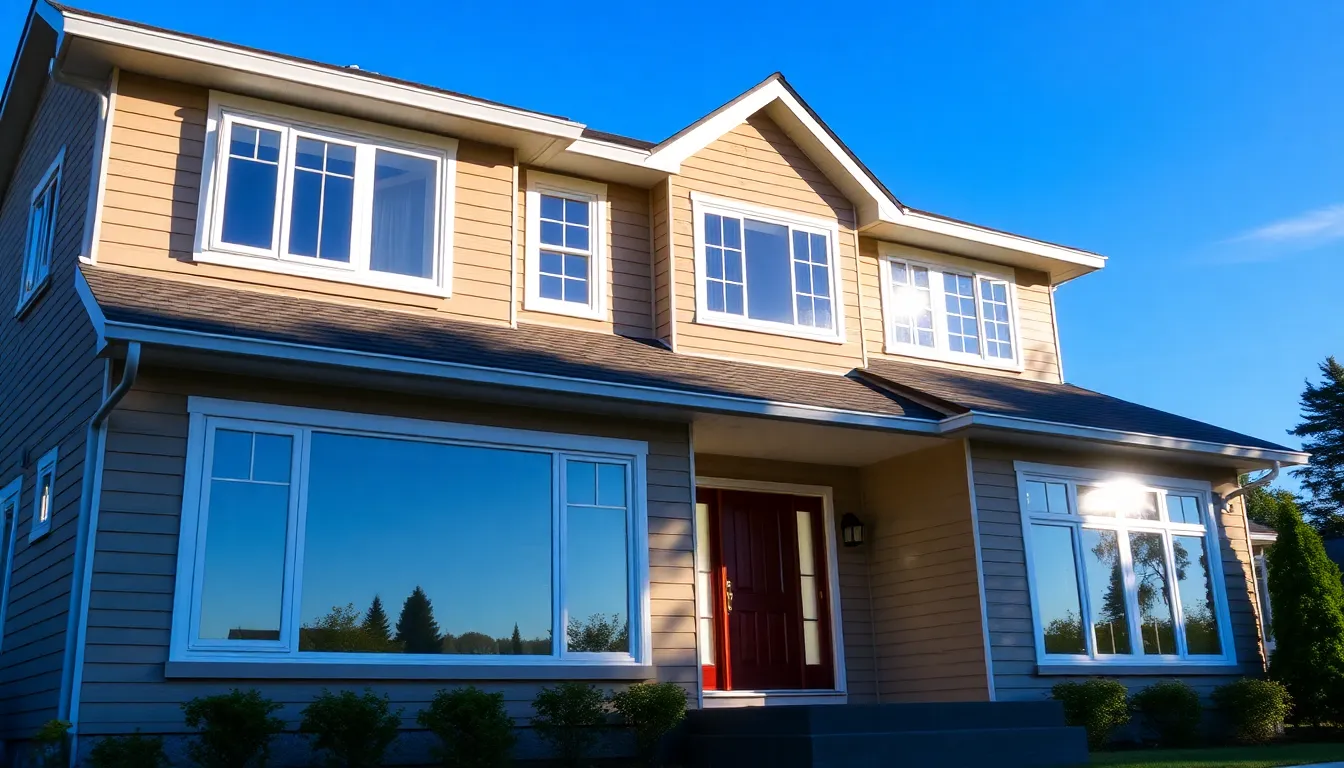When it comes to home improvements, window replacement might not sound like the most thrilling topic. But think about it—those old, drafty windows are like that one friend who always shows up uninvited and leaves the door wide open. It’s time to kick them to the curb! Upgrading windows can transform a home’s look, boost energy efficiency, and even make your neighbors a tad jealous.
Imagine cozying up in a warm living room during winter, all while your energy bills take a nosedive. Sounds dreamy, right? With so many styles and materials available, finding the perfect windows is easier than choosing a Netflix show on a lazy Sunday. So let’s dive into the world of window replacement and discover how it can elevate your home while keeping your wallet happy.
Table of Contents
ToggleOverview of Window Replacement
Upgrading windows represents a significant home improvement project. Homeowners benefit from enhanced aesthetics, energy efficiency, and increased property value.
Importance of Window Replacement
Replacing old windows addresses issues such as drafts, leaks, and outdated designs. Improving energy efficiency reduces heating and cooling costs. It also contributes to a more comfortable living environment. Investing in newer, well-insulated windows boosts the home’s market appeal. Consequently, neighbors and potential buyers notice the difference.
Benefits of Upgrading Windows
Upgraded windows provide numerous advantages. Energy-efficient models often use double or triple-pane glass to minimize heat transfer. Enhanced security features offer peace of mind, protecting against break-ins. Various styles, such as casement and sliding windows, cater to different aesthetics. Improved natural light leads to brighter interiors, creating a welcoming atmosphere. Lastly, high-quality window materials, such as vinyl and fiberglass, require minimal maintenance, saving homeowners time and effort.
Types of Windows for Replacement

Understanding the various types of windows for replacement can aid in making informed decisions for home improvement. Each style offers unique benefits and aesthetic contributions.
Double-Hung Windows
Double-hung windows feature two sashes that slide vertically. This capability allows for increased ventilation options, as both sections can open. Maintenance is straightforward, with removable sashes available in many models. Popular among homeowners, these windows suit both traditional and modern styles. They enhance curb appeal while providing effective insulation against weather elements.
Casement Windows
Casement windows are hinged on one side and open outward, providing unobstructed views and optimal airflow. This style seals tightly when closed, enhancing energy efficiency. Additionally, many designs feature a crank mechanism for easy operation. Versatile in location, they fit well in various spaces, including areas with limited wall space. Casement windows complement contemporary architecture and bring natural light indoors.
Sliding Windows
Sliding windows operate by gliding along a track, offering an easy-to-use design. Ideal for spaces where outward movement isn’t practical, they maximize natural light and provide wide views. Security features have improved significantly, ensuring safety for homes. Sliding windows effectively utilize space and are often chosen for their minimalistic aesthetic. Installation typically proves straightforward, further appealing to homeowners considering upgrades.
Window Replacement Process
The window replacement process involves key steps to ensure a successful upgrade. Understanding the details can lead to better decision-making.
Initial Assessment
Conducting an initial assessment helps identify window issues. Inspect for drafts, water leaks, or condensation between panes. Homeowners should consider how these problems affect energy efficiency and comfort. Professional evaluations can pinpoint existing complications. Factors like window age and existing materials play a critical role when choosing replacements. Checking structural integrity around the window frame also improves the replacement process.
Choosing the Right Window
Selecting the right window involves examining various styles and materials. Popular options like double-hung, casement, and sliding windows cater to different aesthetic preferences and functional needs. Homeowners must consider energy ratings, which indicate thermal performance. Additionally, style compatibility with the home’s architecture is crucial. Personal preferences regarding color and finish can influence the selection. Consulting with professionals can clarify choices and uncover optimal options based on individual requirements.
Installation Steps
Installation steps begin with removing old windows. Careful handling prevents damage to surrounding structures. Homeowners should prepare the opening by cleaning and ensuring structural integrity. Next, new windows are fitted into place, ensuring level alignment. Securing windows with fasteners enhances stability and functionality. Insulation material is applied around the frame to minimize air leaks. Sealing gaps guarantees optimal energy efficiency. Finally, homeowners verify operation to ensure smooth functionality before completing the project.
Cost Considerations
Cost plays a crucial role in the decision to replace windows. Understanding the financial implications helps homeowners make informed choices.
Average Costs of Window Replacement
The average cost for window replacement ranges between $300 and $1,000 per window. Budget-friendly options, such as vinyl windows, might cost around $300. Higher-end choices, like fiberglass windows, can exceed $1,000. Installation fees can add another $100 to $200 per window, depending on the complexity of the job. A project involving multiple windows often leads to cost savings due to bulk pricing. Therefore, researching local market prices can provide insights into expected expenses.
Factors Influencing Price
Several factors influence window replacement prices significantly. Window material plays a vital role; vinyl tends to be less expensive, while wood or fiberglass generally costs more. Size and style also impact the total cost; larger or specialty windows often incur higher prices. Additionally, energy efficiency ratings affect costs; windows with better insulation typically command a premium. Labor costs may vary based on the contractor’s experience and project complexity. Regional pricing differences can further alter overall expenses, making it essential to gather multiple quotes.
Investing in window replacement is a smart move for any homeowner looking to enhance comfort and efficiency. Upgrading to modern windows not only elevates a home’s aesthetic but also significantly reduces energy costs. With various styles and materials available, homeowners can find options that perfectly fit their needs and preferences.
The benefits extend beyond savings, as new windows improve security and allow for better natural light. By addressing issues like drafts and leaks, homeowners can create a more inviting living space. Ultimately, window replacement is a valuable investment that pays off in both comfort and property value.


